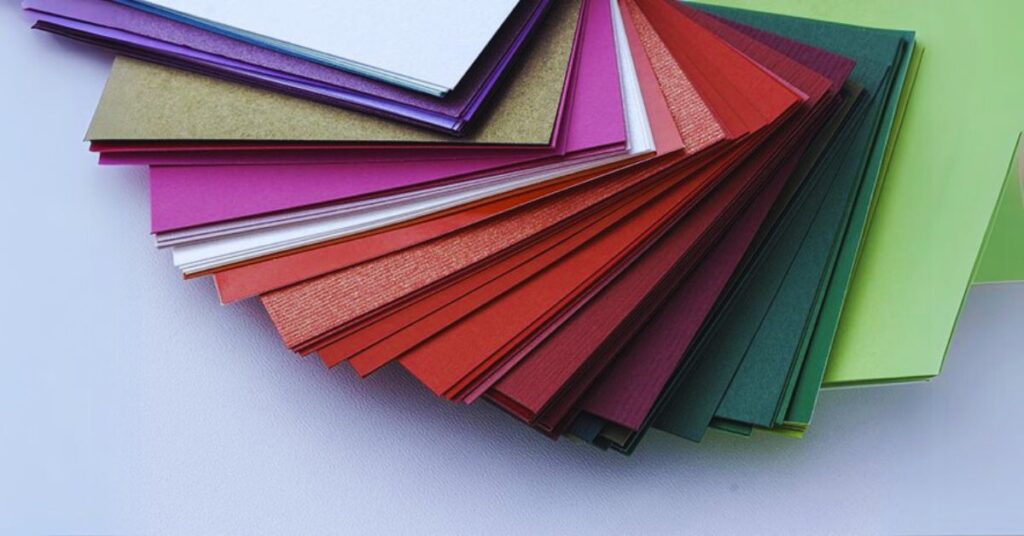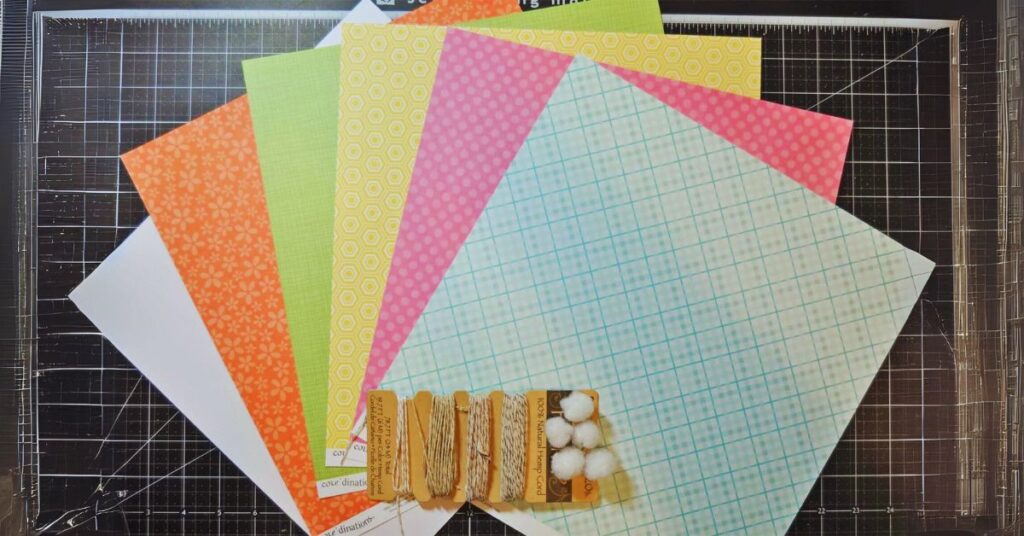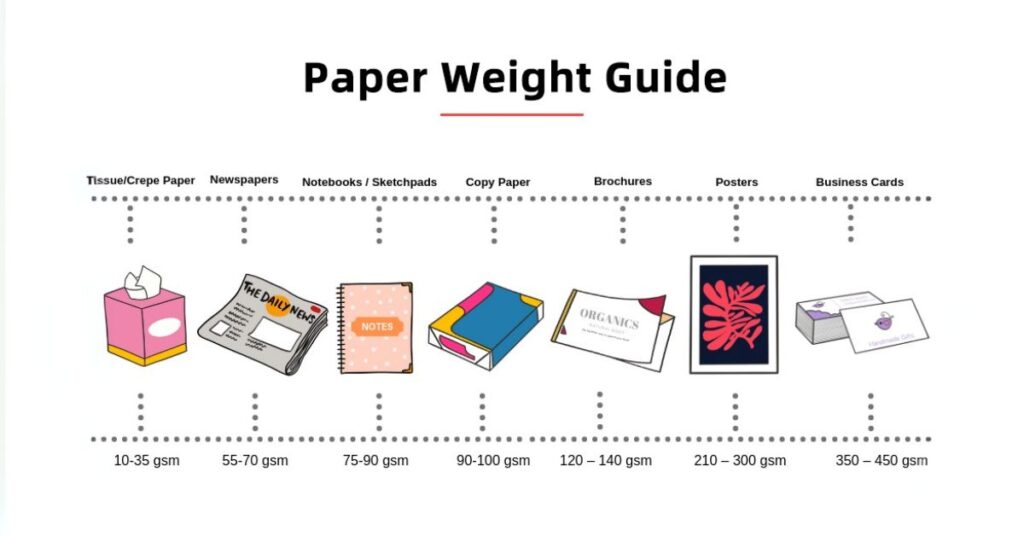Why is paper weight an important factor to consider when creating branding materials? Touch, the first sense that responds when a customer interacts with your printed information, holds the secret to the solution. A straightforward brochure may be made into an engaging tactile experience with the correct paper weights, promoting professionalism without using words. It serves as your brand’s unseen spokesperson, quietly ensuring the initial face-to-face encounter is memorable and powerful.
The paper weight chart you select can either increase or decrease the apparent value of your work, whether you’re assembling a corporate report, a high-end portfolio, or promotional booklets. It’s about how your content works in the hands of your audience, not just about how it looks.
What are Paper Weights?
Paper weight, expressed in pounds or grams per square meter (GSM), is the weight of 500 standard sheets of paper in their uncut state. Paper weight charts can be perplexing because different paper types have varying standard widths and weights. For instance, Text and cover paper are rarely the same size.
75 GSM paper is typically considered lightweight, but 250 GSM to 350 GSM card stock is considered heavyweight.
Although the weight of paper is frequently measured in pounds, a retail bundle of paper may weigh different amounts. The real weight of a ream of 20-pound Bond, which can be purchased at any office supply store, is likely approximately 5 pounds. Despite its ambiguity, the paper weight chart is determined by three main factors:
- The weight of 500 sheets of that paper in a specific size.
- The weight of a single sheet of that paper, in a specific size.
- The paper’s thickness in points differs from the points used to measure type, lines, and layout.
What is Some Common Cardstock Paper Weight?

Your business should know the standard weights for various paper styles now that you know the variations in paper weight measurement. The weight range of cardstock wholesale paper is 50–110 pounds (135–300 g/m^2). Because watercolor is used to hold water, it weighs 140 pounds (300 g/m^2), which makes it slightly heavier than other types of paper. Depending on the coating (white shimmer paper, matte paper, etc.), text paper can weigh between 50 and 100 pounds (74 and 148 g/m^2). The next time your company has to order extra paper, keep these standard weights in mind.
Knowing the differences between paper weights when purchasing wholesale or bulk paper will assist your business in determining which type of paper is best for its needs. As a result, there is no need to squander money on needless wholesale paper, which can reduce paper and financial waste.
What Does Paper Thickness Mean?
The type and weight of the paper you print are crucial factors to consider when creating your print media. Both will affect the finished product’s appearance and texture. In this way, the caliber of your brand may be reflected in the caliber of the paper. Your consumer will hold and touch the paper before they even start reading the message, so how it feels is important. Choosing the proper paper can help you make that important first impression.
Generally speaking, heavier or thicker paper communicates durability and quality. However, different print products will require different types of paper and weights. Sometimes, it’s preferable to be thinner. Consider fliers for events. These are short-term or “throw-away” items. Purchasing premium paper in this situation is not environmentally wise or could be more worthwhile. Therefore, it is best to choose a lesser paperweight. Understanding how paper thickness is measured will help you determine the ideal weight for your print media.
What Type of Paper Should You Choose?
The product you are making will determine exactly what kind of paper you need. For certain uses, different weights will work better. Consider how frequently your product will be handled and used when deciding on the paper to print. Stronger paper is required for frequent handling. Take note of the product’s target market. Are they content with a thinner, more casual product, or do they want something thicker and more abundant?
Consider your spending plan. Certain papers cost more than others. You should also consider the printing and finishing methods you intend to employ. Thicker paper will look better for printing options like thick ink coverage, embossing, and foiling.
Text 70-80lb
- Lightweight
- Budget-friendly while maintaining quality
- Very Flexible
- Perfect for interior booklet pages, buck slips, flyers, direct mail booklets, and notepads
Text 100lb and up
- Mediumweight
- Slightly thicker and heavier
- Holds up well to double-sided printing with high ink coverage
- Perfect for magazines, catalog pages, calendars, brochures, and door hangers
Cover 80lb and up
- Heavyweight
- Thicker than text stocks
- Very durable with increased rigidity
- Perfect for product packaging, business cards, greeting cards, hang tags, and postcards
How To Choose The Right Card Stock Paper Weight?

Selecting the appropriate paper weight involves balancing the weight with the product’s intended use. Each of the most popular paper types—Bond, book (or Text), cover, index, and tag—will work better for a specific function. Here, we’ve included typical uses for each paper to help you understand.
Bond Paper
- Base size: 17 x 22 inches
- Basis weight: 16, 20, 24, 28, 32, and 36 pounds
It is the most prevalent daily paper, also called writing paper. This type is ideal for workplace usage and for copier and printer paper. Lighter-weight bond paper works well for faxes, email printing, high-speed copiers, and standard printing. Because of its versatility, mid-weight bond paper can be used for double-sided printing, reports, proposals, and presentations. Additionally, heavier-weight bond paper is suitable for double-sided printing and can serve as a solid foundation for flyers, resumes, and contracts.
Cover Paper (otherwise known as Card Stock)
- Base size: 20 x 26 inches
- Basis weight: 60 to 120 pounds
Cover paper, also known as card stock, is thick and rigid, making it ideal for printing cards. Light and dark tones are among the many colors available in cover sheets, along with various surface treatments and textures. Because of its wide range of thicknesses, as evidenced by the various weights, cover paper is a sensible option for business cards, postcards, flyers, report covers, menus, invitations, and direct mail-outs.
Index Paper
- Base size: 25.5 x 30.5 inches
- Basis weight: 90, 110, and 140 pounds
Index paper is an extremely thick paper most closely related to index cards. It is a low-cost, smooth-finished alternative that offers substantial bulk and low weight. It is perfect for manila folders, tabs and dividers, sketchbooks, and heavier business cards.
Tag Paper
- Base size: 22.5 28.5 inches
- Basis weight: 100 to 200 pounds
Tag paper is strong, rigid, and long-lasting, making it perfect for usage in a variety of business settings, particularly those that require it to endure frequent use. After printing, it will provide a robust, long-lasting performance, making it the ideal paper for hangtags on consumer goods like apparel and accessories. Any store signage, price tags, door hangers, place cards, card stock weights, table tents, and direct mail postcards look fantastic with tag paper.
The main factor separating text paper from cover paper is weight; both are produced similarly. The inside pages of brochures, books, and direct mail pieces are usually composed of text paper. Not unexpectedly, the covers are frequently made of cover paper. Text card stock weights are a better quality version of book paper, with many of the same applications. Text paper is the best option to ensure quality while printing books or posters.
Learn More on Paper Weight Guide
Ensure you visit Ecosavepapers.com to learn more and view the colors offered in each weight. They offer many colors and weights, from thinner to thicker options! Contact them if you have any questions; their personnel would gladly help.
Conclusion
When printing, card stock paper weight is a crucial factor to consider. The performance of your print media will be greatly impacted by the weight you choose. Your print materials may appear low-quality and poorly designed if you choose the incorrect paper type or weight, but the correct decision can make all the difference! Making your pick will be considerably simpler if you keep our weight comparison chart and paper choice guidelines close at hand. In no time, you’ll be printing media that is precisely weighted!

